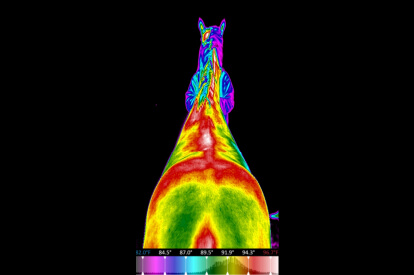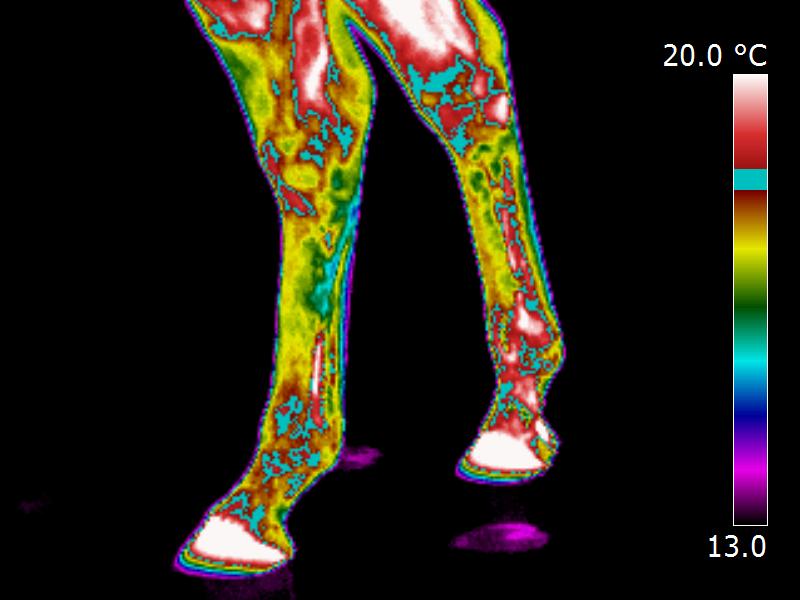Overview
Veterinary thermal imaging uses a camera to measure a patient’s body surface temperatures. This veterinary-specific software converts the temperatures into images that help evaluate physiology. Thermal images use colors to represent the body’s surface temperatures of the animal. This provides a physiological map of the patient and allows veterinarians to see the unseen.
Digatherm makes reading and interpreting thermal images easy. Colors clearly represent and correlate with temperatures on the thermal image. Because of this, clinicians can easily identify areas of increased or decreased temperatures. Thermal imaging for animals helps pinpoint where problems are and knowing where to look further.


Veterinary patients cannot talk. Non-invasive thermal imaging cameras for animals provide a physiological picture. This image of the patient speaks for them. Many patients have thermal abnormalities before an owner or clinician notices a change. Thermal images assist diagnosis and treatment early in the disease process. Follow-up images allow for objective monitoring of any therapeutic plan. They also create a roadmap to target treatments.
A Digatherm equine thermal imaging camera objectively monitors any pharmaceutical or modality-based therapeutic plan. The common question: “When can they return to work?” is answered by visualizing the progress of the case. Early return to work often results in reinjury. Monitoring with thermal imaging helps validate complete healing before return to work.
- Detecting issues early before any clinical signs
- Objective monitoring of any therapeutic or rehabilitation plan
- Client education allowing better understanding and compliance